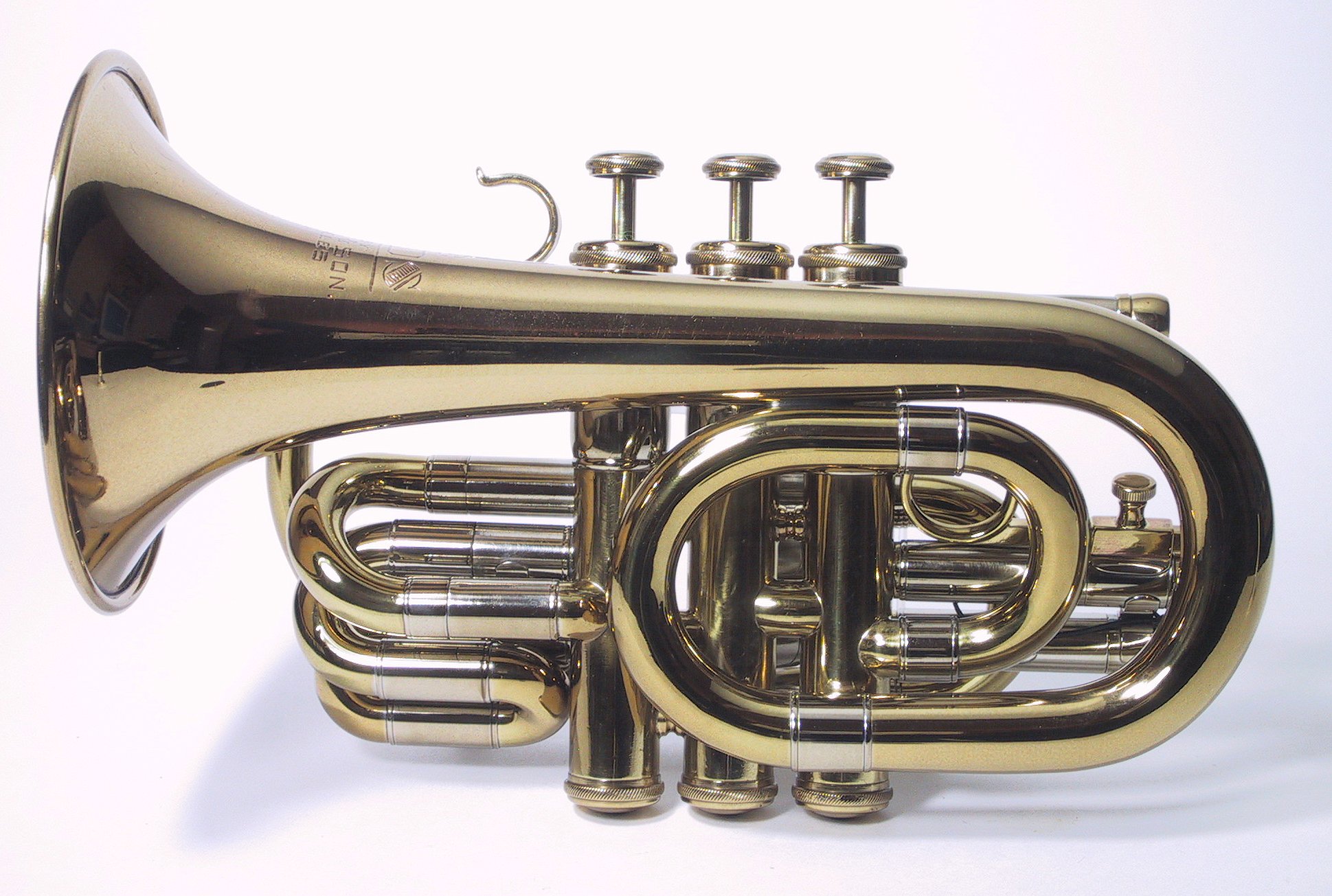Olds Pocket Cornets and Trumpets
As I’ve stated elsewhere, pocket cornets and trumpets are the least instrument for the most money. Making one or converting one from a standard instrument is very labor intensive and the only true advantage is the ease of packing one for travel. In spite of the extra cost, they hold some fascination in the novelty and unique designs to a small number of enthusiasts.
The first is the Olds Military model cornet that has its own page on this site, including discussion of challenges in both design and construction. Click on the image below to navigate to that page.
Next is The Olds standard cornet that Nick DeCarlis built with my assistance only in bending the bell. Nick also made the very beautiful and deluxe case.
Click on images for larger views.
The “Superette” below was also built by Nick. This and the Standard above were lacquered by Mark Metzler with a tint that replicates the aged look of perfectly preserved originals from the mid-century.
The Olds Recording model trumpet pictured below is another design and build by Nick DeCarlis, but for this one, I bent not only the bell, but the two curves leading to the bell from the same “Re-O-Loy” red brass alloy as the bell, and the mouthpipe. Notice that Nick designed the trigger to act on the secondary tuning slide rather than the third slide. On a visit to S.E. Shires Co., Doc Severinsen had the opportunity to play this instrument and remarked that it was an excellent player.
Next is another DeCarlis design and build, this time for a customer, Mark Robinson. The Olds Superstar model trumpets and cornets are largely ignored by Olds enthusiasts in spite of being excellent instruments, but Mr. Robinson appreciates these, almost to obsession. He has also commissioned other modifications including a Superstar C trumpet and a Superstar Aida trumpet that breaks down to a size that fits into a standard cornet case.
The most recent of these Olds pocket instruments is an Ambassador cornet for Mr. Yasuaki Furuta, on Osaka, via his friend, Katsuhisa Seki. Mr. Furuta already owns the Martin Committee pocket trumpet that I made (converted) and requested that I make another and asking for my suggestions as to make and model. I threw out a few ideas, but asked for ideas and his first thought was the Olds Ambassador cornet because he loves the sound that was produced by jazz soloist Don Joseph on his. I loved the idea. Of course, the Ambassador is a student model and excellent examples can be purchased for very little, but any Olds fan knows that the quality of both the design and construction of the Ambassadors was as high as the most expensive models. The bell flare on these is larger than most, allowing a darker timbre and the quality of these instruments is better than most professional models available today. When he first saw the photos of the completed instrument, Mr. Furuta named it “Little Joseph” in honor of Don Joseph.
I had parts horns around, but decided to purchase one from the early 1950s that was almost unused condition. The Ambassador cornets have tall valve sections but I wanted it more compact than that, and luck was on my side, as I had several new old stock Opera trumpet valve sections that are the same .468” bore as the cornet. I thought about changing the nickel ballusters to the brass parts from the Ambassador, but decided, instead, to go the other way and add more nickel silver trim to this special cornet. Ambassadors have nickel ferrules, but brass outside slide tubing throughout, but I still have a lot of original Olds nickel tubes, so added those for a more deluxe treatment. Since the third slide is so short, I set up the first slide to be mobile with an adjustable thumb hook as in the early Supers. As always, I used the original parts: (pinky) finger ring, braces and waterkeys to maintain the original design ethic. I even had a new old stock mouthpiece receiver from the late 1950s that maintains the original external design, but accepts a standard cornet mouthpiece shank rather than the unique Olds cornet shank from that era. I also went to the trouble of re-bending the original mouthpipe, which was in pristine condition to fit the new layout. Little Joseph is 8 1/2” long, with stock bell rim diameter of 4 5/8”. I’m really enjoying being retired and taking whatever time it takes to make this sort of project as good as I can without the stressful schedule necessary for making a living.


















